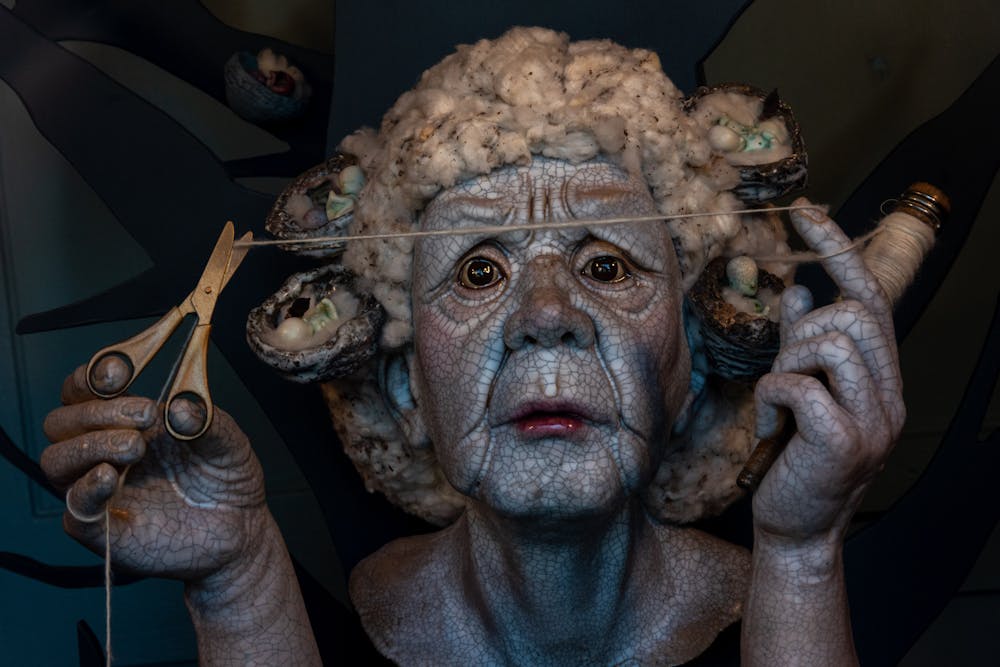Cotton-laden ceramic busts, abstract textile-inspired sculptures and intricate threadwork are some of the details visitors can expect to see while viewing works of art recently installed at The Mills, a popular housing complex for students.
These pieces are part of the newly unveiled Mill District Public Art Trail — a set of installations from 11 local artists scattered throughout the Olympia, Granby and Whaley neighborhoods.
The 701 Center for Contemporary Art, the largest non-profit organization for artists in South Carolina, opened the trail of art on Sept. 7 to remind residents of the harsh circumstances textile mill workers faced.
The Olympia Mill was previously the world's largest cotton mill under one roof, but Olympia halted operations in 1996. The building was left abandoned until 2007, when it was repurposed into what is now a student-centered apartment complex.
The history of Columbia's textile mill industry is a central theme in the trail’s artworks.

Artist Diana Farfán’s exhibit, "Linthead," sits in a guard house outside of the Granby mill. The piece's name was inspired from a derogatory term used to describe the physical appearance of mill workers who found themselves covered head-to-toe in cotton lint after a day of work.
In 2007, Farfán moved to Greenville, South Carolina from Bogotá, Colombia, and she recalls being surprised to hear many Colombian accents in the area.
In the late 1960s and '70s, approximately 30 families from Medellin, Colombia were recruited by textile mills in Greenville for the knowledge they provided and their proficiency in operating looms and other textile machinery.
“They felt isolated," Farfán said. "They didn’t feel part of the American community that they were working with, not even the neighbors they were living with because first of all, the language was a barrier … they were not particularly a darker skin color, but that means they were women of color. So there was discrimination."
Farfán’s installation features a detailed ceramic bust of an old woman Farfán describes as having “an expression of tiredness, but also experience and vulnerability." The woman's hands labor on a single strand of thread as her fatigued appearance illustrates the intensity of the lives of mill workers.
Of the other exhibits, threadwork artist Suzan Lenz's installation is similar to Farfán's. It draws attention to female mill workers through an authentic portrait of Lola Derrick Byars, who worked in Granby Mill as an 8-year-old.
Hundreds of pirns, or wooden spindles used to hold thread, are hung from the ceiling in front of Lola’s portrait. Piles of thread on the floor seem as if they have slipped from the spindles, now resting at Lola's feet.

“To have them suspended from the ceiling, and to cover the floor with unraveled sewing thread was a way to reflect the things that were important in Lola’s life,” Lenz said.
The thread in "Lola’s World" is repurposed, having been used in one of Lenz’s previous exhibitions, "Threads: Gathering My Thoughts."
“I’m able to talk about the way women used to quilt, and it wasn’t going to the grocery store and buying all new everything," Lenz said. "They use feed sacks and old dresses that were, you know, worn out, or other materials of their life to repurpose and give second life into something else that they could continue using. So that’s a way I pay homage to all those anonymous women."
Like Lenz, Brittany M. Watkins' installation, "Hands Unseen," sees the repurposing of garments and fabric as an artistic medium for the installation.
Her work can be found in the guard house adjacent to Farfán’s "Linthead," and features a large wheel alongside a collection of hands which are hung from the ceiling, complemented by various textile-related items and fabrics. The exhibit is illuminated by blue lights, best observed after sunset.
“The imagery of the wheel and the idea of it hanging there in the center is kind of the constant representation of the wheel of industry and economy and labor, because it just keeps going,” Watkins said.
Watkins sees the trail as something which represents more than the exhibits themselves. She highlighted the impact it has on local artists, saying “it gives them a way to interact with the community they live in, and it also beautifies the area and gets people outside and engaging with one another.”
“I have come to recognize the old mill and its guard houses as symbols of resilience for current day residents,” Watkins said.

